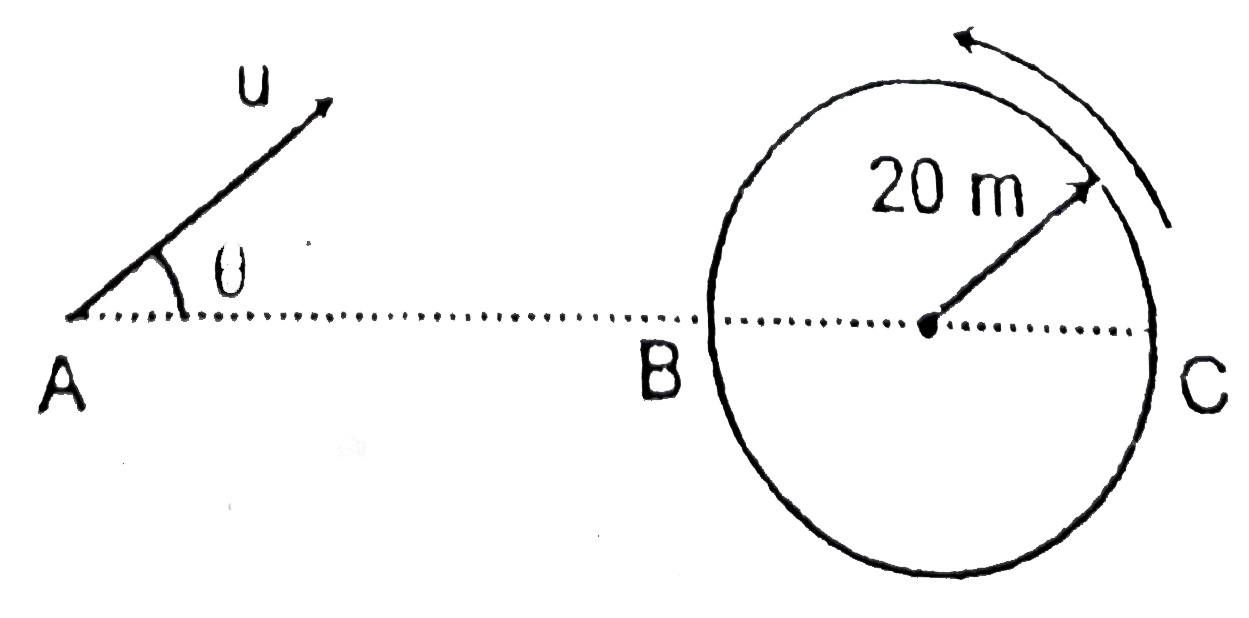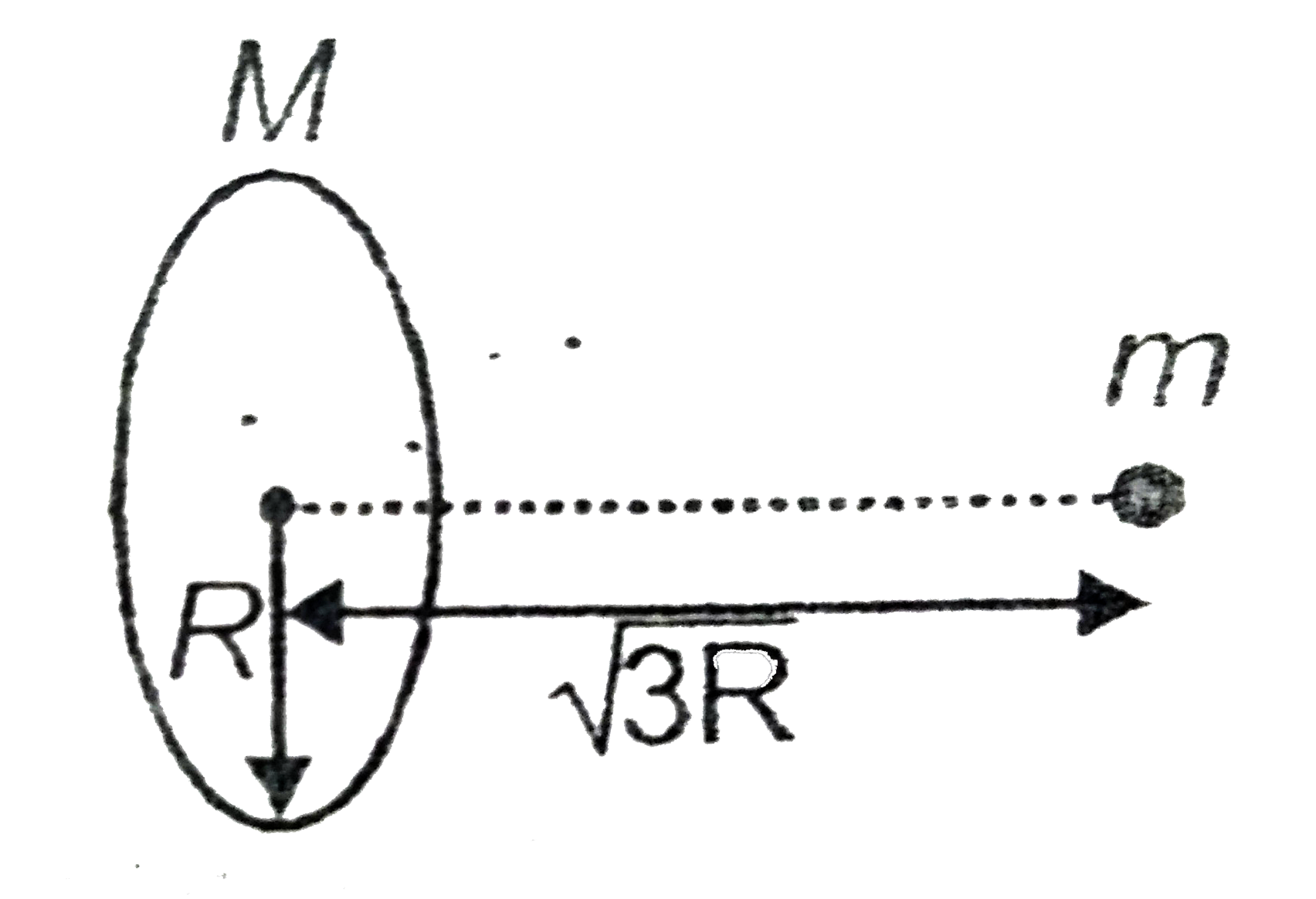A particle is moving along a vertical of radius r=20 m with a constant vertical circle of radius r=20 m with a constnt speed v=31.4 m/s as shown in figure. Straight line ABC is horizontal and passes through the centre of the circle.A shell is fired from point A at the instant when the particle is at C. If distance AB is 20√3 m and the shell collide with the particle at B, then prove tanθ=(2n−1)2√3. Where n is an integer. Further show that smallest value of θ is 30∘

As at the time of firing of the shell, the particle was at C and the shell collides with it at B, therefore the number of the revolutions completed by the particle is odd multiple of half i.e. (2n−1)/2, where n is an integer.
Let T be the time period of the particle then
T=2πrv=2×3.14×2031.4=4 second
If t be the time of the flight of the shell, then
t=time of [(2n−1)/2] revolutions of the particle
=(2n−1)2×4=(2n−1) second
for a projectile the time of flight is given by t=2usinθg
Hence 2usinθg=(2(2n−1).......i
The range of the projectile is given by R=u2sin2θg
Hence u2sin2θg=20√3 ......ii
From equations i and ii tanθ=(2n−1)2√3
For θ to be smallest n=1 so tanθ=(2n−1)2√3
Similar Questions
A particle is moving along a vertical circle of radius R=20m with a constant speed v=31.4m/s as shown in the figure. Straight line ABC is horizontal and passes through the centre of the circle. A shell is fired from point A at the instant when particle is at C. The distance AB is 20√3m and shell collides with the particle at B, if smallest possible value of the angle of projection is k×10∘ then find the value of k.
 View Solution
View SolutionA particle is moving along a vertical circle of radius R=20m with a constant speed v=31.4m/s as shown in the figure. Straight line ABC is horizontal and passes through the centre of the circle. A shell is fired from point A at the instant when particle is at C. The distance AB is 20√3m and shell collides with the particle at B, if smallest possible value of the angle of projection is k×10∘ then find the value of k.
 View Solution
View Solution
Knowledge Check
- Question 1 - Select One
If a particle is moving along a circle of radius 3 m with a constant speed 9m/s, then it covers a quarter of the circle in time of
Aπ/3sBπ/6sCπ/2sDπ/8s - Question 2 - Select One
A particle moves in a circle of radius 20 cm with linear speed of 10 m/s. Find the angular velocity
A500radsB150radsC50radsD15rads
A particle is moving along a circle of radius 20cm, with a linear velocity of 2m//s. Calculate the angular velocity of the particle.
View SolutionA particle is moving along a circle of radius 20cm, with a linear velocity of 2m//s. Calculate the angular velocity of the particle.
View SolutionA particle is moving along a circle of radius 20cm, with a linear velocity of 2m//s. Calculate the angular velocity of the particle.
View SolutionA particle moves in a circle of radius 4m with a linear speed of 20m/s. Find the angular speed.
View SolutionA point particle of mass m is released from a distance √3R along the axis of a fixed ring of mass M and radius R as shown in figure. Find the speed of particle as it passes through the centre of the ring.
 View Solution
View SolutionA point particle of mass m is released from a distance √3R along the axis of a fixed ring of mass M and radius R as shown in figure. Find the speed of particle as it passes through the centre of the ring.
 View Solution
View Solution

